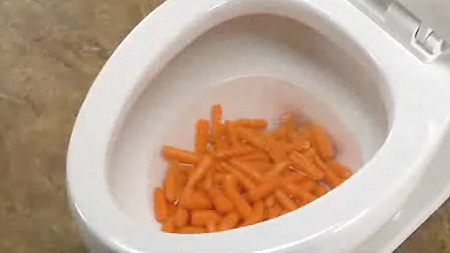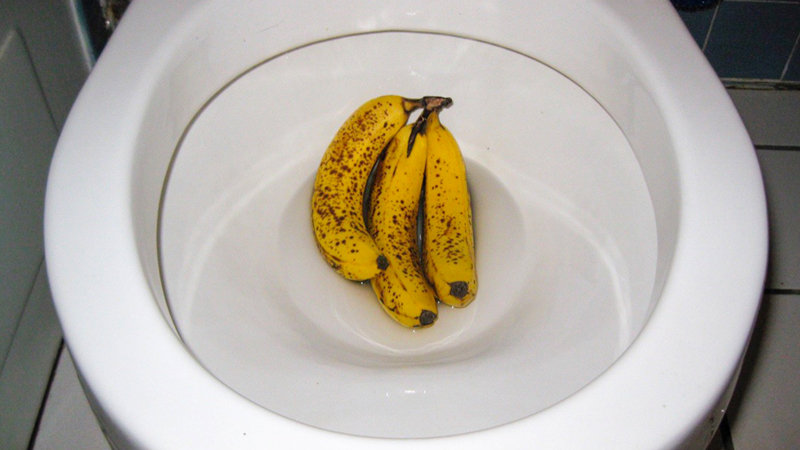Is it Allowed to Flush Food Down the Toilet?
Is it Allowed to Flush Food Down the Toilet?
Blog Article
The content down below in relation to Think Twice Before Flushing Food Down Your Toilet is pretty much remarkable. Check it out yourself and see what you think about it.

Introduction
Lots of people are commonly faced with the predicament of what to do with food waste, particularly when it involves leftovers or scraps. One common concern that emerges is whether it's okay to purge food down the toilet. In this write-up, we'll delve into the reasons why individuals might consider flushing food, the consequences of doing so, and alternate methods for correct disposal.
Reasons why people could consider flushing food
Absence of awareness
Some people might not be aware of the possible harm brought on by flushing food down the toilet. They may wrongly believe that it's a safe technique.
Benefit
Purging food down the toilet may feel like a quick and easy option to dealing with undesirable scraps, especially when there's no neighboring garbage can offered.
Negligence
In many cases, individuals might just select to flush food out of sheer laziness, without considering the effects of their activities.
Consequences of flushing food down the bathroom
Ecological impact
Food waste that winds up in waterways can add to air pollution and injury aquatic ecological communities. In addition, the water made use of to flush food can strain water resources.
Pipes concerns
Flushing food can bring about clogged pipes and drains pipes, triggering costly plumbing repairs and inconveniences.
Sorts of food that ought to not be purged
Coarse foods
Foods with fibrous structures such as celery or corn husks can get tangled in pipelines and create blockages.
Starchy foods
Starchy foods like pasta and rice can take in water and swell, resulting in obstructions in pipelines.
Oils and fats
Greasy foods like bacon or cooking oils should never be flushed down the bathroom as they can solidify and create clogs.
Appropriate disposal techniques for food waste
Making use of a garbage disposal
For homes geared up with garbage disposals, food scraps can be ground up and flushed via the plumbing system. Nevertheless, not all foods appropriate for disposal in this fashion.
Recycling
Specific food packaging materials can be reused, minimizing waste and decreasing ecological influence.
Composting
Composting is a green method to take care of food waste. Organic materials can be composted and utilized to improve dirt for gardening.
The significance of correct waste monitoring
Lowering environmental injury
Appropriate waste monitoring practices, such as composting and recycling, aid reduce pollution and protect natural resources for future generations.
Shielding plumbing systems
By preventing the method of flushing food down the commode, homeowners can avoid expensive plumbing repair services and preserve the stability of their pipes systems.
Final thought
Finally, while it might be appealing to purge food down the commode for comfort, it is very important to understand the potential consequences of this action. By adopting appropriate waste administration techniques and dealing with food waste properly, people can add to much healthier plumbing systems and a cleaner setting for all.
FLUSH FOOD DOWN THE TOILET?
FLUSHING FOOD CAN CAUSE BLOCKED DRAINS IN YOUR HOME
All of the plumbing fixtures in your home are connected to the same sewer pipe outside of your home. This outdoor sewer pipe is responsible for transporting all the wastewater from your home to the Council sewer mains. Even small pieces of food that go down the kitchen sink can cause problems for your sewer. It should therefore be obvious that flushing larger bits of food, such as meat, risks a clog in either the toilet itself or the sewer pipes. Flushing greasy food is even more problematic because oil coagulates when it cools, coating the interior lining of your pipes.
THE TOILET IS NOT A BIN
Food isn’t the only thing that people shouldn’t be flushing down the toilet. People use the toilet to dispose of all kinds of things such as tampons, makeup wipes, dental floss, kitty litter and even underwear. Water goes to great lengths to educate residents about the high costs and stress placed on wastewater treatment systems simply from people flushing the wrong stuff down the toilet. It costs taxpayers millions of dollars each year, and homeowners thousands in blocked drain repairs.
FLUSHING FOOD IS A WASTE OF WATER
Flushing food is a waste of our most precious resource - water. In June this year Level 1 water restrictions were introduced to protect water supply from drought conditions. Much of New South Wales continues to be affected by prolonged drought with recent figures revealing up to 97 per cent of the state remains in drought. Depending on whether you have a single or dual flush toilet, every single flush uses between five and 11 litres of water. In the current climate this is a huge amount of water to be wasting on flushing food that should be placed in the bin (or better yet, the compost).
https://www.jabplumbingsolutions.com.au/blog/can-you-flush-food-down-the-toilet

Do you really like more info about Flushing Food Down the Toilet?? Try leaving feedback directly below. We'd be happy to find out your suggestions about this posting. Hoping that you come back again in the near future. Appreciated our piece of writing? Please share it. Let another person discover it. Thanks for being here. Please visit our website back soon.
Book Report this page